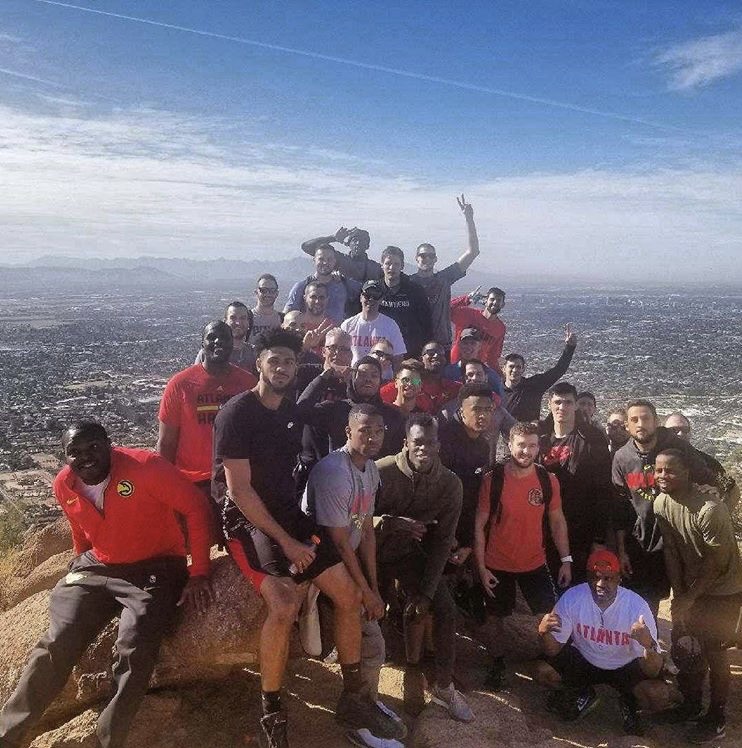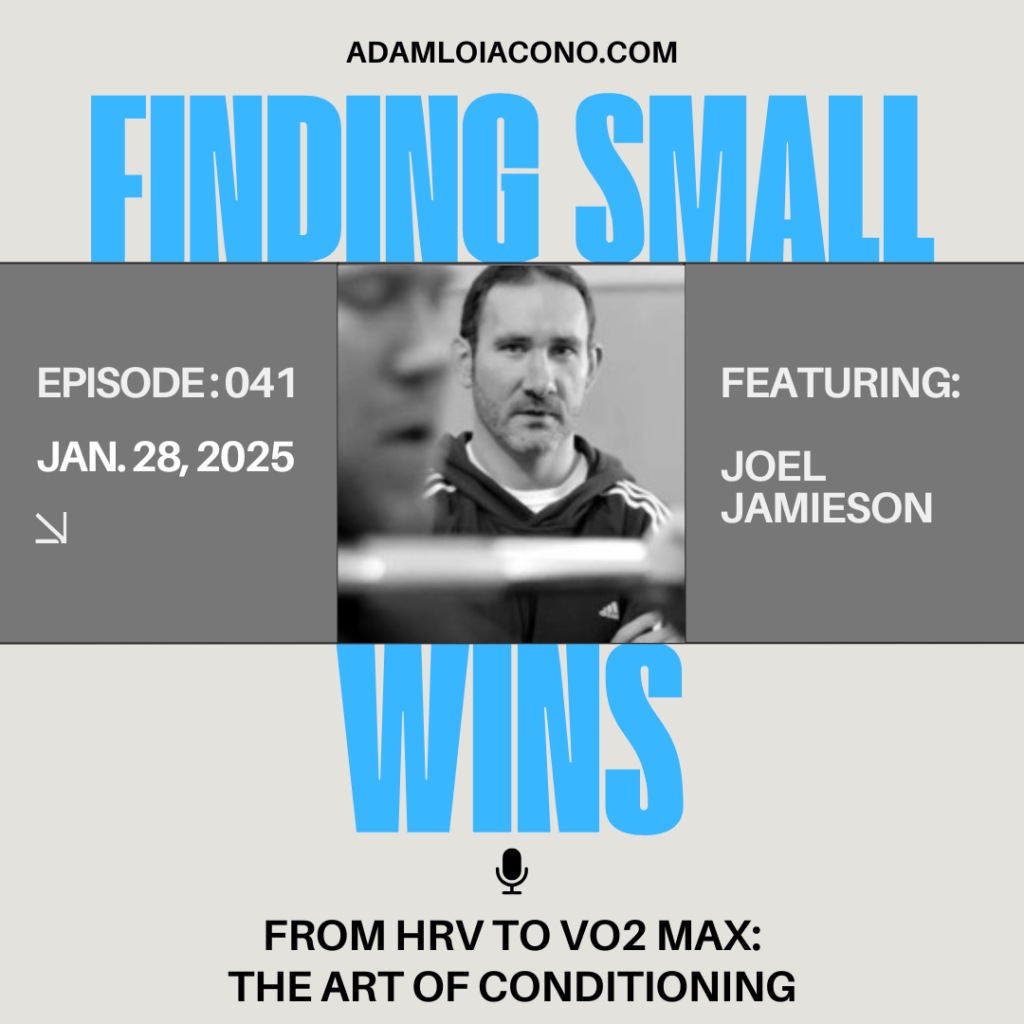Approximate read time: 14 minutes
“Most of your performance gains happen in the other 22 hours. If you’re not managing sleep, stress, and sunlight—you’re leaving progress on the table.”
What You will learn
- Why your training results depend more on what you do outside the gym than inside it.
- How circadian rhythms, light exposure, and sleep impact recovery and readiness.
- The biological cost of blue light, irregular routines, and under-recovery.
- How to measure lifestyle variables like HRV, REM sleep, and morning energy.
- Five simple lifestyle habits you can implement today to improve performance and longevity.
The Invisible Side of Performance
Every athlete and active adult wants to know: “What’s the best workout for me?” But what if the better question was: “What am I doing during the other 22 hours of the day?” For years, we’ve been conditioned to focus our attention on the workout: the training session, the lift, the drill, the run. Yet, the reality is that what happens between those sessions — the behaviors, rhythms, and choices that define our day-to-day lives — may carry just as much weight when it comes to optimizing performance, health, and recovery.
In my recent conversation with Nate Barry on The Finding Small Wins podcast, we explored the concept of lifestyle as a performance variable. Nate defines lifestyle factors as everything an athlete consistently experiences in their environment: from the foods they eat and the light they’re exposed to, to the chemicals, technologies, and relationships that influence their biology. It’s the 22 hours outside the gym that shape how well you respond to the one or two hours inside it.
This article unpacks what those 22 hours mean from a physiological and performance standpoint, explores how lifestyle affects the recovery process, and offers practical strategies rooted in both clinical experience and research.
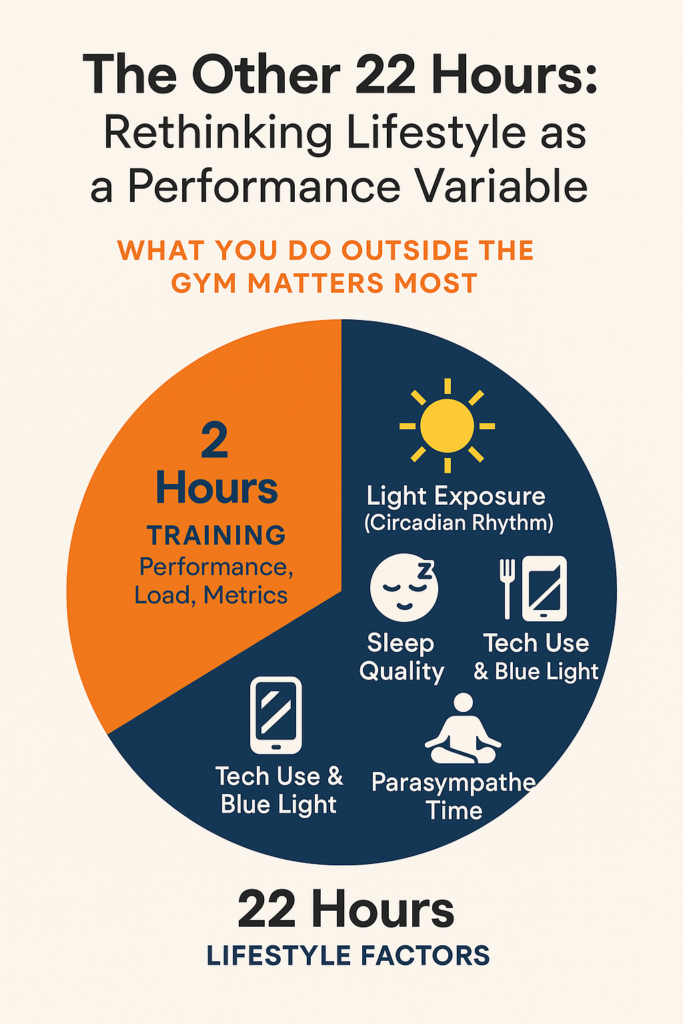
Why the Other 22 Hours Matter
Think of your training session like lighting a match. That small spark is necessary, but it’s only effective if there’s fuel. The rest of your day provides that fuel — and determines how your body uses it. This is where the 3P Model — Principles, Process, and Plans — becomes incredibly relevant. Training is a Plan. But the Process must include recovery, circadian alignment, nourishment, and the environment we create around the athlete.
Research shows that circadian alignment plays a vital role in how our body metabolizes energy, repairs tissue, and regulates hormone function. A systematic review by Vitale and Weydahl (2017) found that morning chronotypes (those whose biology peaks earlier in the day) perform better when they train earlier, whereas evening chronotypes peak later in the day. This reinforces the importance of not just what we do, but when we do it.
The Invisible Load That Disrupts Recovery
Recovery isn’t just about passive rest. It’s about actively returning to homeostasis. As Nate Barry shared on the podcast, recovery is best defined as “the energetic capacity to come back to baseline.” It’s a dynamic process influenced by psychological stress, inflammation, hormonal balance, sleep quality, and mitochondrial function.
The European College of Sport Science’s joint statement on Overtraining Syndrome (Meeusen et al., 2013) highlights that inadequate recovery combined with excessive stress can lead to a state of non-functional overreaching or even chronic maladaptation. This means that an athlete might be “training hard” and yet stagnating, simply because their recovery system is overdrawn.
These stressors aren’t always obvious. The phone you check first thing in the morning emits blue light that delays melatonin secretion, shifts your circadian rhythm, and compromises your next night’s sleep. In a study by Chang et al. (2015), participants who read from light-emitting eReaders before bed took 10 minutes longer to fall asleep, secreted 55% less melatonin, and experienced 1.5 hours of circadian delay — resulting in reduced REM sleep and lower next-day alertness.
So while you may feel like you’re resting, your biology could be underperforming.
100% Free Access
Take Control of Your Performance and Stay Injury-Free
Discover the 5 powerful tools of the proven 3P Injury Prevention Toolkit + receive weekly emails that will help you improve performance and live pain free (and the latest podcast news)
Measuring the Unmeasured
You can’t manage what you don’t measure. That’s a principle we apply to strength testing, jump profiling, and heart rate zones. But it should also apply to lifestyle. Here’s how:
- Sleep: Use objective tools (Whoop, Oura, Apple Watch) to track not just sleep quantity, but efficiency, HRV, latency, and REM/SWS duration. Consistently poor HRV or REM may signal unresolved stress.
- Light Exposure: Track time spent outdoors or measure screen time at night. Consider software like IrisTech or f.lux to manage blue light.
- Mood and Energy Logs: Subjective fatigue ratings are often the first indicator of under-recovery. In athletes experiencing overreaching, mood disturbances frequently precede performance decrements.
- Heart Rate Trends: Morning heart rate or HRV trends provide a useful snapshot of autonomic readiness.
These measurements, while simple, offer a window into the other 22 hours. They help answer the critical question: Am I ready to train today?
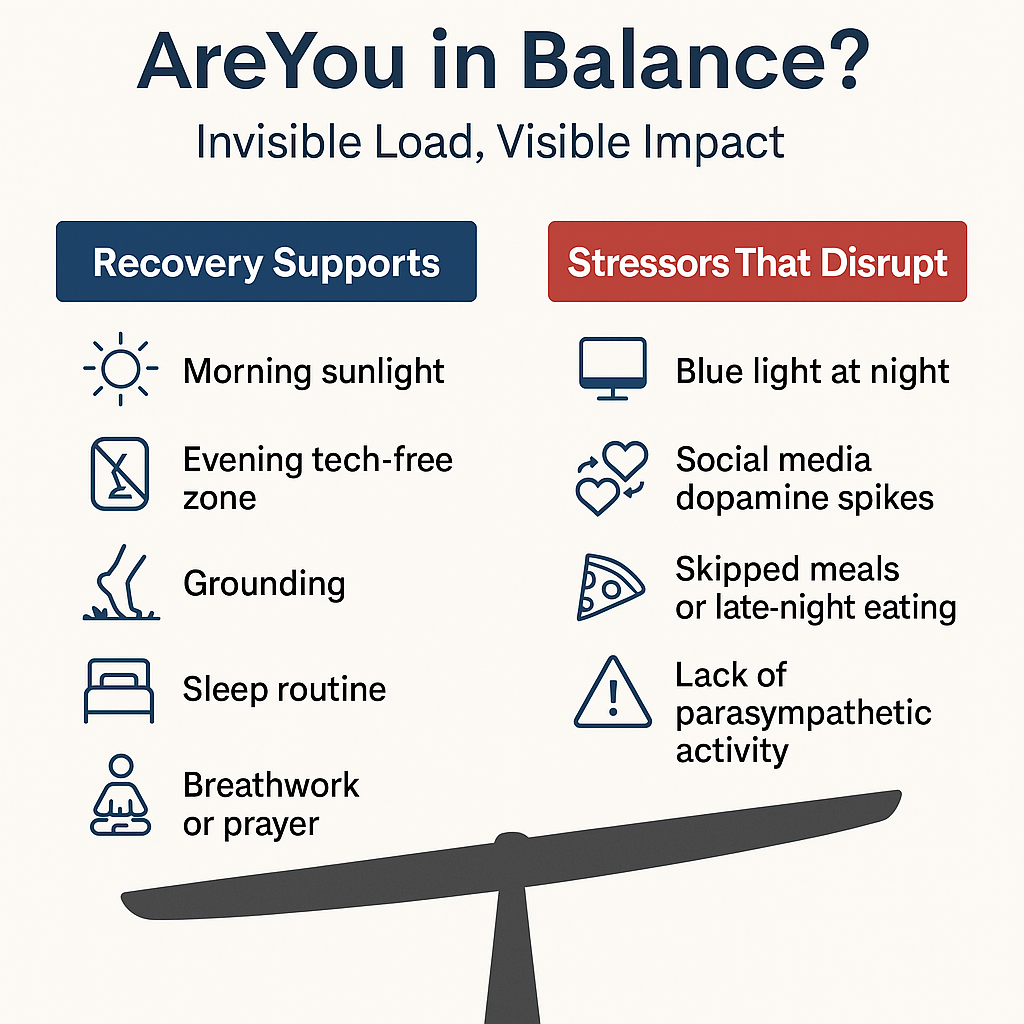
5 Levers to Improve Your Lifestyle Today
You don’t need a new supplement stack or a cryo-chamber. You need simple, sustainable changes:
- Morning Sunlight Within 30 Minutes of Waking: Light exposure early in the day helps reset your circadian rhythm, suppress melatonin, and boost cortisol appropriately.
- Eat Your Meals at Consistent Times: Regular timing anchors metabolic rhythms. Irregular eating patterns, particularly at night, have been linked to weight gain and glucose dysregulation.
- Create a Wind-Down Routine: Eliminate screens at least 60 minutes before bed. Even 4 hours of screen time before bed reduced REM sleep and delayed melatonin onset by 1.5 hours.
- Go for a Walk (Barefoot if Possible): Grounding has been shown to improve HRV and reduce inflammation. Think of it as free recovery.
- Establish a Non-Negotiable Parasympathetic Practice: Whether it’s breathwork, prayer, or 30 minutes of quiet walking, find your way to shift from sympathetic dominance to recovery mode.
Integrating the 22 Hours into Performance Therapy
As a performance therapist, I don’t just manage the training hour. I help athletes manage their physiology 24/7. In my mentorship program, I teach providers to look beyond the sets and reps. The art of performance therapy lies in managing the process.
- Educating athletes on sleep hygiene
- Helping them create evening rituals
- Measuring HRV, fatigue, and stress patterns
- Designing training times that align with chronotype
Incorporating these principles builds resilience. It reduces the risk of injury, enhances recovery, and most importantly, creates sustainability in performance.
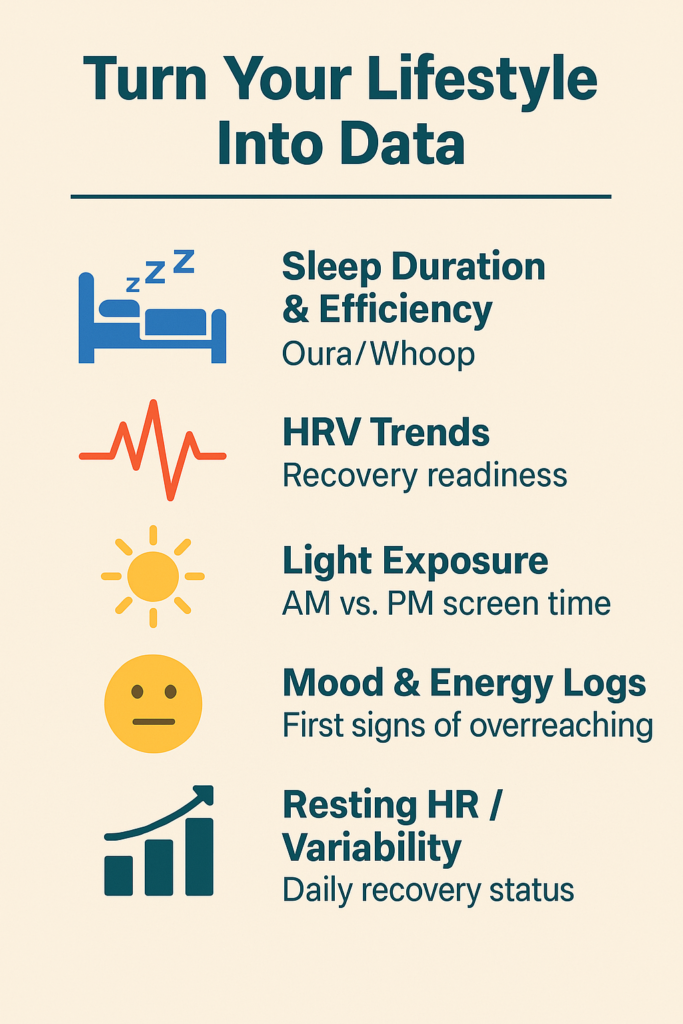
Manage the Other 22
What you do in the gym is important. But what you do between gym sessions might be even more important.
Recovery is not just about ice baths and Normatec boots. It’s about rhythm. Light. Energy. Sleep. It’s about the other 22 hours.
So here’s your challenge: audit your day. When do you get light? How do you wind down? Is your sleep truly restorative? What does your body say in the morning?
Because the best athletes aren’t just training hard. They’re living smart.
And that, ultimately, is how we find small wins every day.
Interested in learning more about HRV and Recovery? Follow the link below to listen to this episode with expert conditioning and HRV coach, Joel Jamieson, as he breaks down how to effectively monitor the other 22 hours.

Insightful Videos
Subscribe today to Adam’s YouTube channel to get the latest on rehab, training, sports science, and so much more!
References
Vitale JA, Weydahl A. Chronotype, physical activity, and sport performance: a systematic review. Sports Med.2017;47(9):1859-1868. doi:10.1007/s40279-017-0741-z.
Meeusen R, Duclos M, Foster C, et al. Prevention, diagnosis, and treatment of the overtraining syndrome: joint consensus statement of the European College of Sport Science and the American College of Sports Medicine. Eur J Sport Sci. 2013;13(1):1-24. doi:10.1080/17461391.2012.730061.
Chang AM, Aeschbach D, Duffy JF, Czeisler CA. Evening use of light-emitting eReaders negatively affects sleep, circadian timing, and next-morning alertness. Proc Natl Acad Sci U S A. 2015;112(4):1232-1237. doi:10.1073/pnas.1418490112.
Fullagar HHK, Skorski S, Duffield R, Hammes D, Coutts AJ, Meyer T. Sleep and athletic performance: the effects of sleep loss on exercise performance, and physiological and cognitive responses to exercise. Sports Med.2015;45(2):161-186. doi:10.1007/s40279-014-0260-0.
Souissi H, Chtourou H, Chaouachi A, et al. The effect of training at a specific time-of-day on the diurnal variations of short-term exercise performances in 10- to 11-year-old boys. Pediatr Exerc Sci. 2012;24(1):84-99. doi:10.1123/pes.24.1.84.
